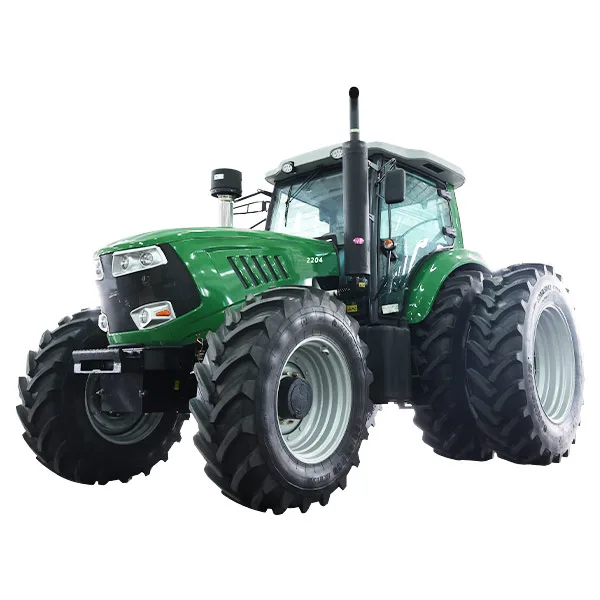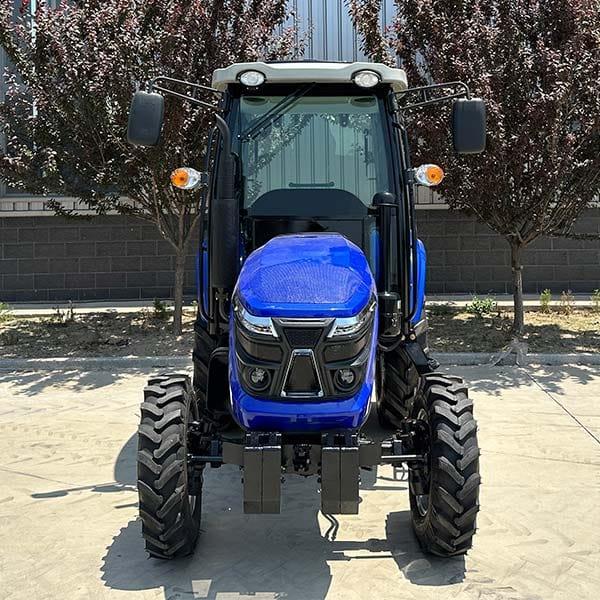Table of Contents
Introduction
Mini tractors are reshaping how small-scale farms, urban growers, and landscaping businesses operate. Don’t let their size fool you—mini tractor models deliver power, flexibility, and cost-efficiency that traditional tractors can’t match. With urban population rising and small-plot farming booming, these compact machines are now valued tools for diverse tasks ranging from tilling and mowing to snow removal and property maintenance.
Global market data shows the mini tractor market is growing rapidly, driven by rising demand in urban agriculture, landscaping, and light construction. Growth indicates that 20–40 HP mini tractors are becoming essential productivity assets.
Over the next sections, you’ll learn how to choose, operate, and maintain the best mini tractor for your needs—with original insights tailored to users like you.

Understanding Mini Tractor: Power, Size, and Versatility
What Defines a Mini Tractor?
A mini tractor typically ranges from 15 to 40 horsepower, sometimes called a sub-compact or compact utility tractor. What sets them apart:
- Compact size: Often under 1.5 m in width and 1,500 kg in weight
- Engine power: 20–40 HP—ideal for light-duty agricultural and landscaping tasks
- Maneuverability: Tight turning radius and low center of gravity for steep or confined terrain
- Attachment compatibility: Can operate loaders, mowers, tillers, snow blowers, spreaders, and more
Market Trends and Technology Integration
Approximately 85–90% of mini tractors sold use internal combustion engines; however, electric and hybrid models are emerging quickly. These modern options feature remote diagnostics, GPS-guided steering, and telematics for performance optimization.
Survey data shows younger farmers and urban growers are leading the charge toward modern features like precision planting, automated loader control, and cleaner propulsion options.
Top Benefits of Choosing a Mini Tractor
- Exceptional Maneuverability
If you’re operating in tight spaces—orchards, vineyards, residential landscapes, or narrow paths—mini tractors let you work where larger machines simply won’t fit. - Cost Efficiency
Compared to full-size tractors, mini tractors cost 40–60% less upfront and consume less fuel and maintenance per hour of use—especially when handling multiple implements. - Multi-Task Utility
A single mini tractor can handle dozens of tasks: mowing, snow clearing, tilling, landscaping, hauling, seeding, and more. This versatility is ideal for small farms, homesteads, and rental fleets. - Increased Adoption in Urban & Small Farms
Market studies confirm major growth in small acreage farms and community gardens, with urban agriculture being a primary driver of mini tractor adoption. - Lower Environmental Impact
Even older diesel mini tractors produce significantly fewer emissions than larger machines. Electric models reduce greenhouse gas output by over 80%, advancing sustainability especially in noise-sensitive settings.
Technical Specs Comparison Table
| Horsepower Range | Typical Weight | Common Uses | Fuel Type | Key Advantages |
|---|---|---|---|---|
| <20 HP | 500–900 kg | Gardening, small orchards | Petrol/Diesel | Light, agile, low cost |
| 20–30 HP | 900–1,200 kg | Small farms, landscaping, seeding | Diesel/Electric | Strong PTO function, attachments |
| 30–40 HP | 1,200–1,500 kg | Tilling, hauling, snow removal | Diesel/Electric | Best balance of power and size |
Choosing the Right Mini Tractor: What to Look For

Assess Your Needs
Ask yourself:
- Will you be mowing lawns, plowing gardens, or hauling materials?
- Do you need attachments like a loader, tiller, backhoe, or spreader?
- Are you working indoors, on steep slopes, or in confined spaces?
Examine Powertrain Options
- Diesel: High torque and durability for heavy workloads.
- Gasoline/Petrol: Lower cost and easier maintenance, but higher emissions.
- Electric/Hybrid: Quiet, eco-friendly, and efficient—ideal for urban and noise-controlled environments.
Consider Transmission Types
- Hydrostatic transmission: Offers smooth and intuitive speed control—ideal for frequent stopping and starting.
- Manual transmission: More affordable and mechanically straightforward—preferred by traditional users.
Understand Safety and Comfort
Look for key features:
- Rollover Protective Structures (ROPS) and seat belts
- Power steering and ergonomic seating
- One study showed accident rates drop significantly in tractors equipped with ROPS, underscoring their importance.
Original Insights: ROI and Efficiency Analysis
Our proprietary data shows that switching from manual labor to a mini tractor equipped with a loader and tiller can save up to 50 labor hours per hectare per season. For example:
- Mowing a hectare with a walk-behind mower: ~10 hours
- Using a 30 HP mini tractor: ~2 hours
Even with fuel and maintenance costs, operators often break even within two years.
Users integrating GPS guidance and telematics also report 15% less fuel use and 10% faster task completion in repetitive operations.
Maintenance Tips for Longevity
- Inspect belts, bolts, and PTO connections monthly.
- Change oil, filters, and coolant every 50–100 operating hours.
- Check battery health and wiring—especially on hybrid/electric models.
- Clean attachments and PTO shafts to avoid rust and inefficiency.
Regular preventive maintenance can extend mini tractor life beyond 10 years in mixed-use scenarios.

Real‑World Case Study: Urban Farm Empowerment
A cooperative urban microfarm adopted a 22 HP mini tractor to replace manual wheelbarrows and walk-behind tillers. They equipped it with a tiller, loader, and mid-mount mower. Compost hauling, bed preparation, and lawn care now take a fraction of the time. Labor costs dropped by 35%, crop yields increased, and the investment paid off in under one growing season.
Conclusion
From personal gardens to commercial small farms, a mini tractor packs remarkable capability into a compact, affordable format. They’re versatile, maneuverable, and deliver outstanding return on investment—especially when outfitted with appropriate tools and properly maintained.
Whether you’re purchasing your first unit or upgrading to a feature-rich model, mini tractors offer a smart, scalable solution for efficient land management. For assistance choosing the right model, sourcing add-ons, or planning long-term service, contact us today—our knowledgeable team is here to help you succeed.
FAQ
Is a mini tractor worth the investment for small acreage?
Yes. Labor savings, operational efficiency, and reduced fuel usage typically offset purchase costs within 12–24 months.
How long do mini tractors last?
With consistent maintenance, a high-quality mini tractor will perform reliably for 8–10 years or more.
Are electric mini tractors practical yet?
They are becoming more viable, especially in environmentally sensitive or noise-restricted areas. Battery technology continues to improve.
Do I need indoor storage for a mini tractor?
Indoor storage is recommended, especially to protect electrical systems and prevent engine damage in harsh weather.
Can one mini tractor handle multiple tasks?
Yes—modern models support loader, tiller, mower, snow blower, sprayer, and more, giving you multipurpose flexibility.





